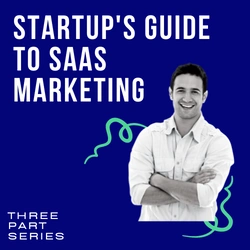How To Make Just An Okay Product Fly Off Digital Shelves With Amazing Sales Copy
What comes first? The Product? The Marketing Plan? The Sales Copy? As with most things in life, the answer will change depending on whom you ask. We can all agree that they are all equally important to get and keep customers and increase sales.
Now, I personally have always sided more with the marketing side of a product or service launch. The product may be lackluster. The customer service may be subpar. But if that marketing is spot-on with strong sales copy, sharp descriptions and a content forward strategy in place firing on all cylinders you can sell even the most unremarkable product.
When you’re writing up your product description or landing page for your digital sales campaign or social media posts, are you aware that you’re always creating a formidable and persuasive script for video marketing? You are.
Sit down with that sales copy you wrote – the one(s) that the customers, social media followers and maybe even your client seem to find the most engaging, and retool it. A quick engaging edit here and a new phrase there, and suddenly you have a complete script for the video marketing portion of the digital campaign.
All sales pages should be written TO the customer and not ABOUT the product. The customer is the focus of your copy, while the product is the guest star – the flashy sidekick you need to convince your star that he or she must have in life or feel the loss forever.
Related: Breaking Down The Elements Of An Effective And Sizzling Sales Page
We don’t buy our vacuums from door-to-door salespeople anymore. Now we buy our vacuums like a civilized society – online because we saw it on an infomercial (Shark and Quantum to name a couple). We head to Amazon and read over the description, look at the photos (even though we just saw it on TV) and, of course, check the reviews. We add it to our cart and checkout, and are instantly annoyed when Amazon informs us that we must wait three entire days to receive it (why am I paying for Prime at this point?).
No door-to-door salesperson used a high-pressure tactic on me.
I fell for the new digital version of the 1950s smooth-talking road ranger – facts with some flash followed by emotional headlines, FOMO (fear of missing out) and rounding it all out – just why my life will be better in every way because of this shiny $300 vacuum.
I’m a copywriter – I’ve written numerous sales pages that convert very well for numerous clients, and I fall for it almost every single time.
Now let me tell you how to help others fall for it!
Closing a browser window is a lot easier than kicking the door-to-door salesman out of your house without being rude. Today you have no more than 15 seconds to make an impact and get a customer’s attention – if you can’t do it in that timeframe, you never will and that buyer will take his or her credit card elsewhere. Product descriptions and sales copy has to be compelling. You must draw people in and make them practically beg you to buy your product.
Of course, the customer can’t actually see, touch or experience the product in real life. We’re now entirely dependent on descriptions and videos and reviews. So why should a customer be interested in this product? How will it improve their lives, and what will they miss out on if they don’t buy it?
My top tips from one copywriter to another to create content that moves products (even products no one really wants):
Help Them To Imagine The Product & Force Them To Visualize It In Their Own Home
That product isn’t tangible to the customer, so it’s your job to make it take form. To put it into a customer’s hands and help them to feel it, to feel its weight (or how lightweight it is) and to begin picturing that item in his or her own home. Write a description that makes it tangible. Describe the product from the perspective of its core demographic – the feel, strength, etc.
Everyone likes examples, especially ones we don’t have to read – let Steve Jobs show you what I’m talking about. Below is the video from 2007 when Steve Jobs introduced the first iPhone to the world. It’s a long video but if you watch it (from a marketing standpoint it is worth watching as Jobs was a phenomenal marketer) you’ll notice how often he uses very descriptive language to force the audience to feel the phone in their hands, to experience the bounce from how lightweight it is and how smooth and strong it feels.
Apple’s CEO pulled the audience into his own personal tactile experience as he was the only one in the room holding the device in question was a trick Jobs used frequently that spawned countless bloggers and journalists to write descriptively about a phone they had not even touched themselves yet.
Consider the Value Proposition
What’s also important is to get your audience to consider the value proposition. A value proposition is essentially the value you’re claiming the product or service provides to a buyer. After all it’s important that what they’re buying is actually worth what they’re paying for it, but you can sell even more by convincing your buyers that the product is worth beyond the price tag.
Telling a customer that the product will make life easier means nothing without evidence. Show AND tell. What can that customer do that extra time? What might his or her life look at with an extra two hours of free time every week?
Or if you’re selling a new sneaker – a decent pair of shoes at a slightly higher than average price point – you’re not selling the look or the feel of the footwear: you’re selling how those shoes will make your customer feel. Stand a little taller. Walk a little more confident. Turn a few eyes and get some attention.
Use Social Proof and Stats
Social proof is everywhere these days for one reason and one reason only – it works. People buy faster with the perceived feeling of potential loss. Social proof is one part of evidence to validate the product by showing how many people are buying it and talking about it. That’s not where it ends, though. Social proof also creates a false (not always, but typically) sense of urgency. If that pop-up on the screen keeps saying someone else bought this product, how many more until the product isn’t in stock, and you can’t get it right away? False scarcity works, and it works well – a technique first started by marketers but now used by even the most reputable companies to clear our inventory quickly.
Create Pressure
Finally, you’re going to want to apply a little creative pressure to prompt your reader to become a buyer right away before it’s too late, and they miss out forever. People don’t buy based on logic or practicality – they have Walmart for that. People buy online out of emotion, fear and the desire that they must act quickly or be locked out forever. After all you surely wouldn’t want everyone you know and respect to have purchased that flashy bauble while you hesitated and were left out of the loop?
As a copywriter, it’s our job (and we love it – most of the time) to supply our clients with the strong and converting sales copy they’re paying for, and it’s up to you to make sure you can charge handsomely and still have a very happy client.



It’s the sales page where the magic happens. This is the page that gives you a return on your marketing investment. It is on this page where we convert visitors to paying customers. Do you know the valuable elements of a high-converting sales page? You will soon. Keep Learning >

Everyone who is selling something could use a strong info-product to compliment their brand and boost engagement. Whether you charge for it upfront or not is irrelevant. I’ve put together my 18 step cheat sheet for creating awesome products. Keep Learning >



